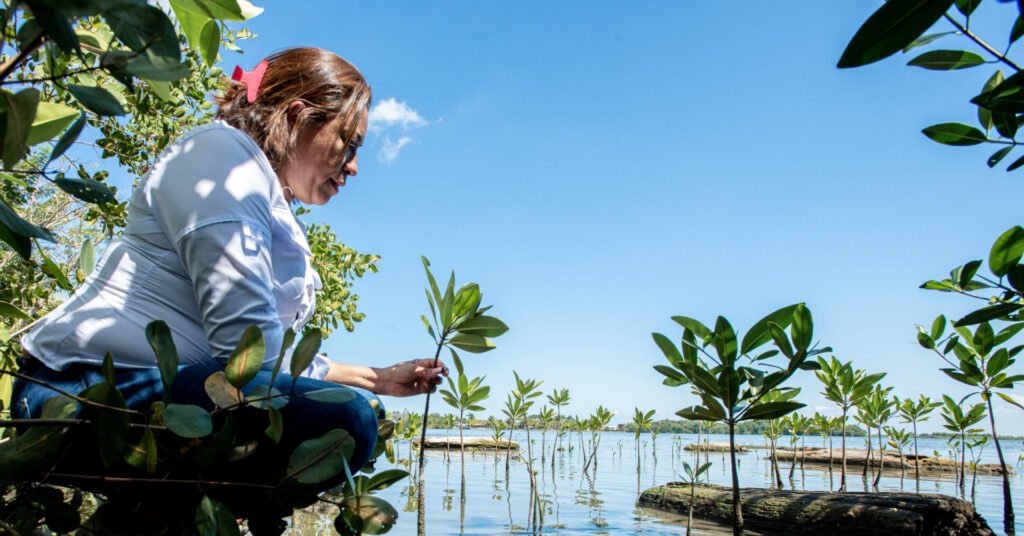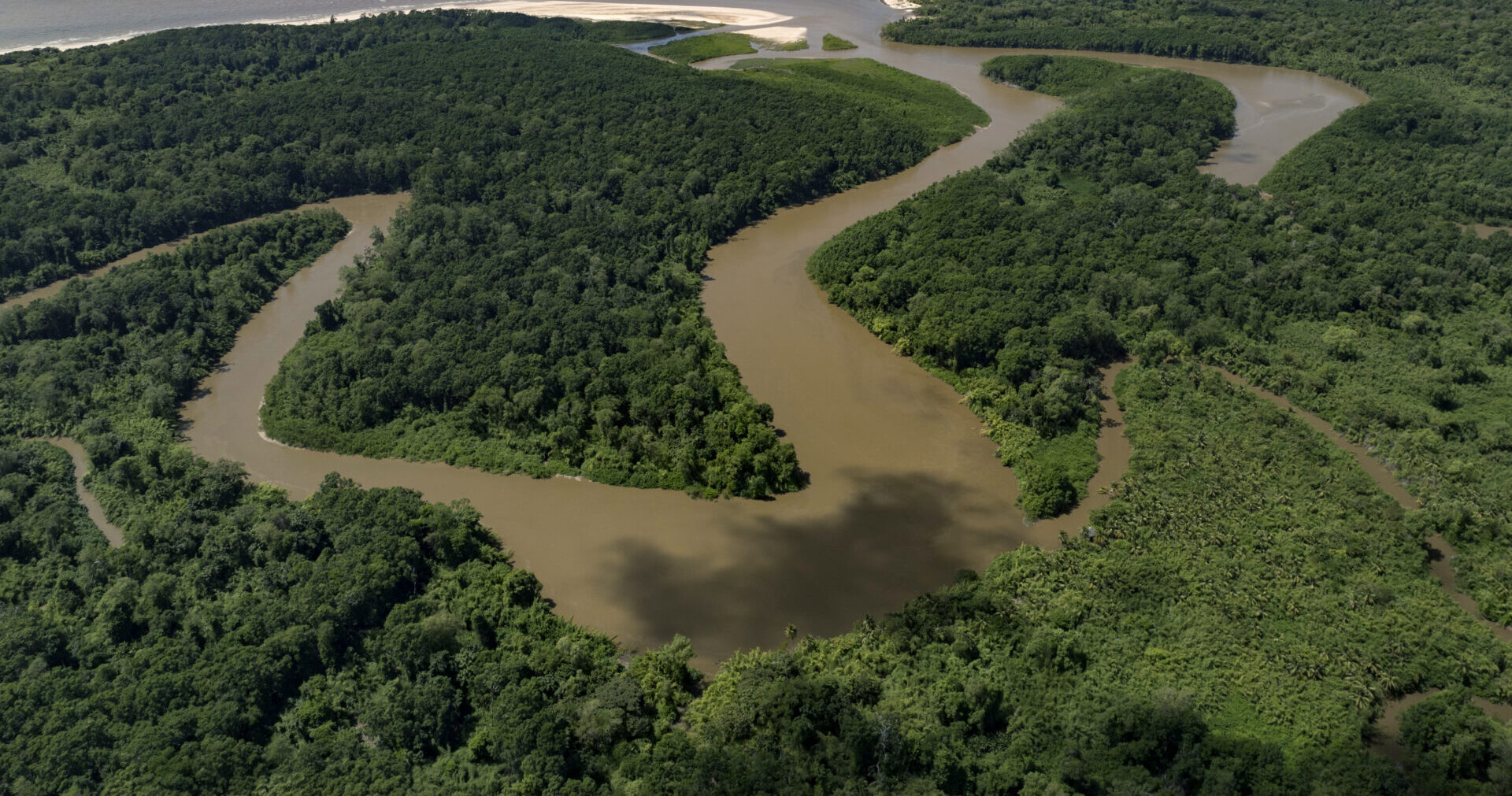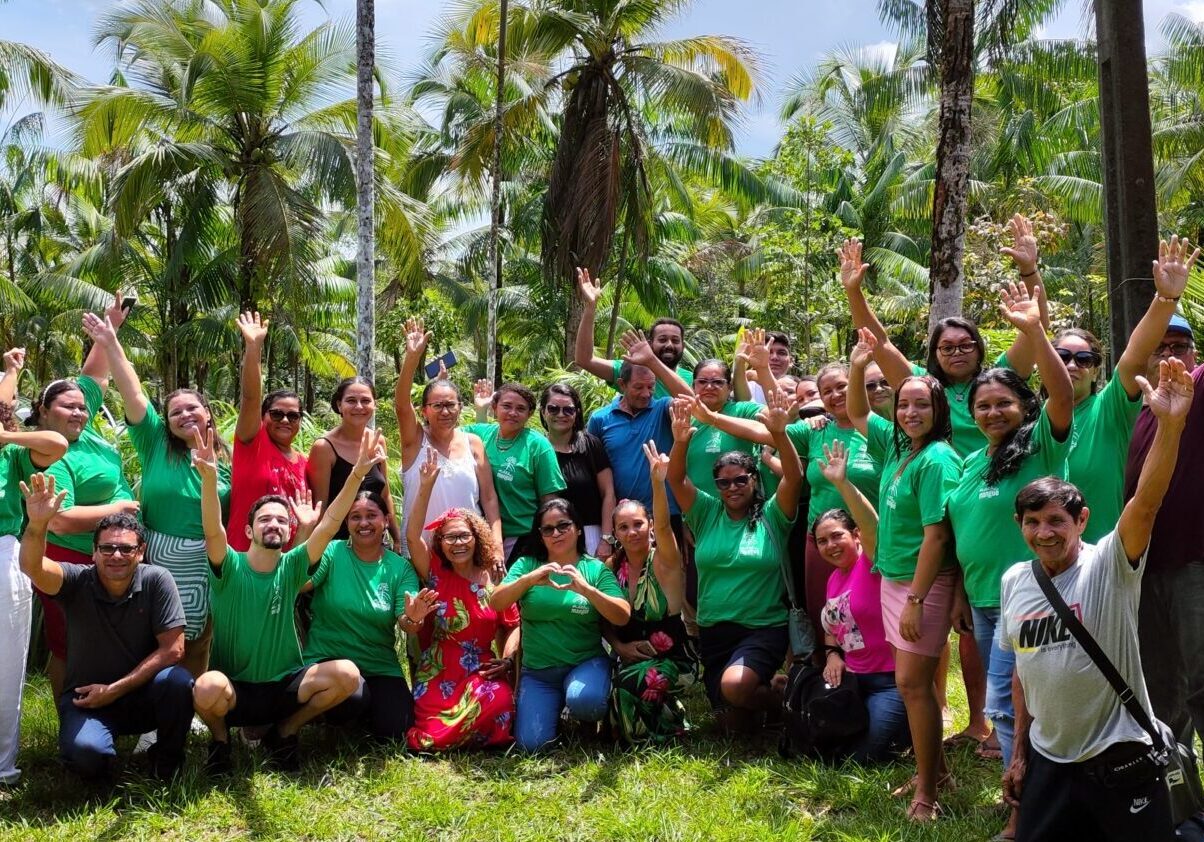Mangroves: nature's coast guard against climate change
What is a mangrove?
Mangroves are tropical trees and shrubs that flourish in coastal areas where freshwater meets the sea. Unlike ordinary trees, these hardy plants have adapted to survive in saltwater conditions that would kill most vegetation. Their extensive root systems serve as natural barriers, protecting coastlines from storm surges, flooding, and erosion.
Mangroves are carbon storage champions
Mangrove forests are among Earth’s most powerful natural climate solutions. These coastal ecosystems capture and store more carbon per area than any other forest type on the planet. This “blue carbon” is stored throughout the mangrove ecosystem in living plant material (trunks, branches, leaves, and roots), the rich soil beneath the mangroves, and the complex root systems that anchor the trees. However, when mangroves are damaged or destroyed, it’s like opening a carbon vault and releasing greenhouse gases back into the atmosphere.

How Rare protects mangroves
Local communities are key to mangrove protection. Rare partners with small-scale fishers, local government officials, and community leaders to enable local communities to effectively protect areas where mangroves live. Our approach focuses on empowering coastal communities with:
- Legal rights to manage their mangrove
- Resources and training for sustainable fishing practices
- Support in developing local conservation plans
- Connections to regional and national policymakers.
DONATE TODAY
Support Rare’s work to safeguard mangroves

SPOTLIGHT
Brazil’s ‘Mothers of the Mangroves’ protect an ecological and cultural heritage

Environmental magazine Mongabay profiled the Mothers of the Mangroves, an all-female collective with more than 800 fishers, shellfish collectors and artisans from 12 coastal extractive reserves in Pará state along Brazil’s Amazon Coast.
“We, the Mothers of the Mangroves, have a mission to show that the mangroves are not just a source of income, food and livelihood; it’s responsible for life on the planet,” Renilde Piedade da Silva, a community leader in the Mothers of the Mangroves network.